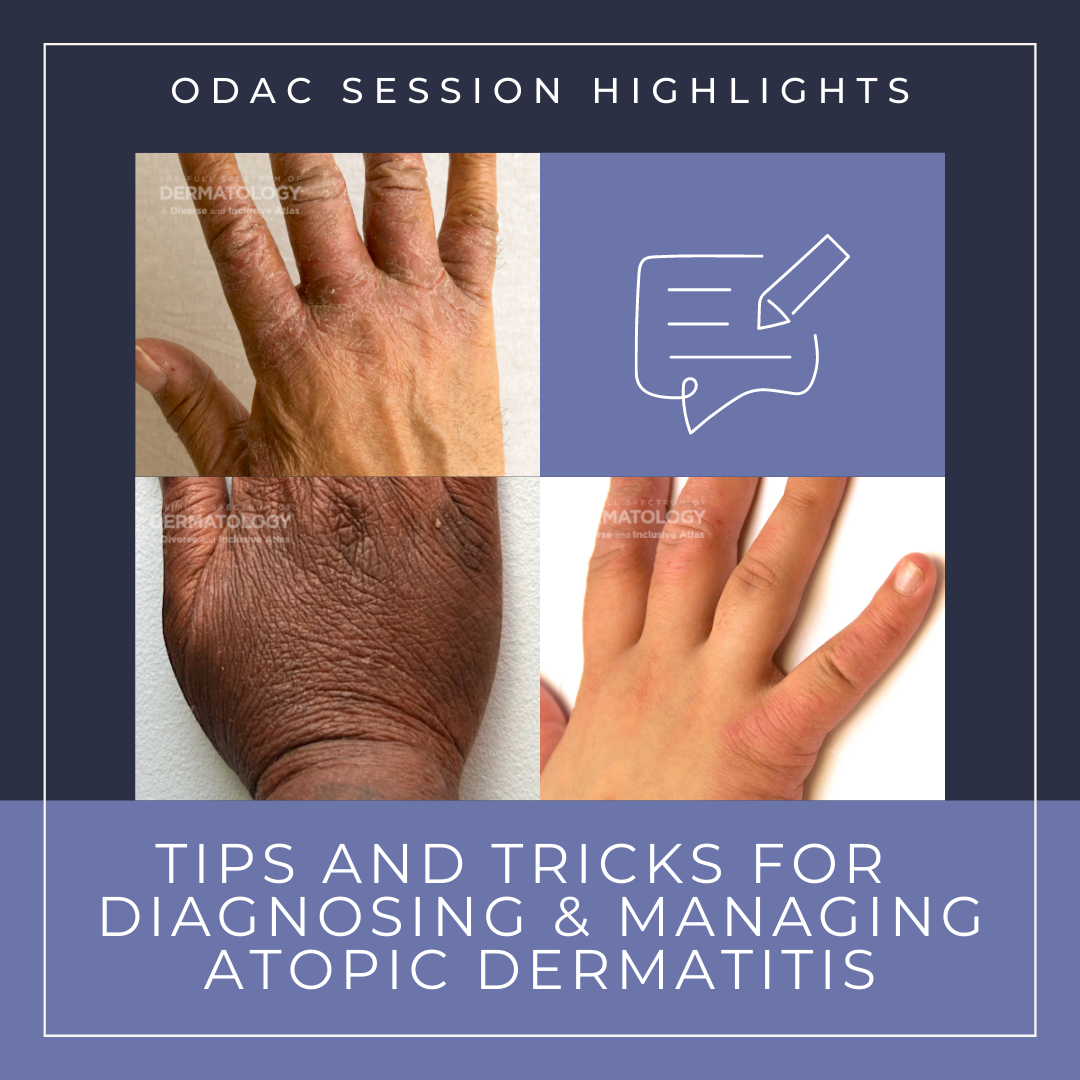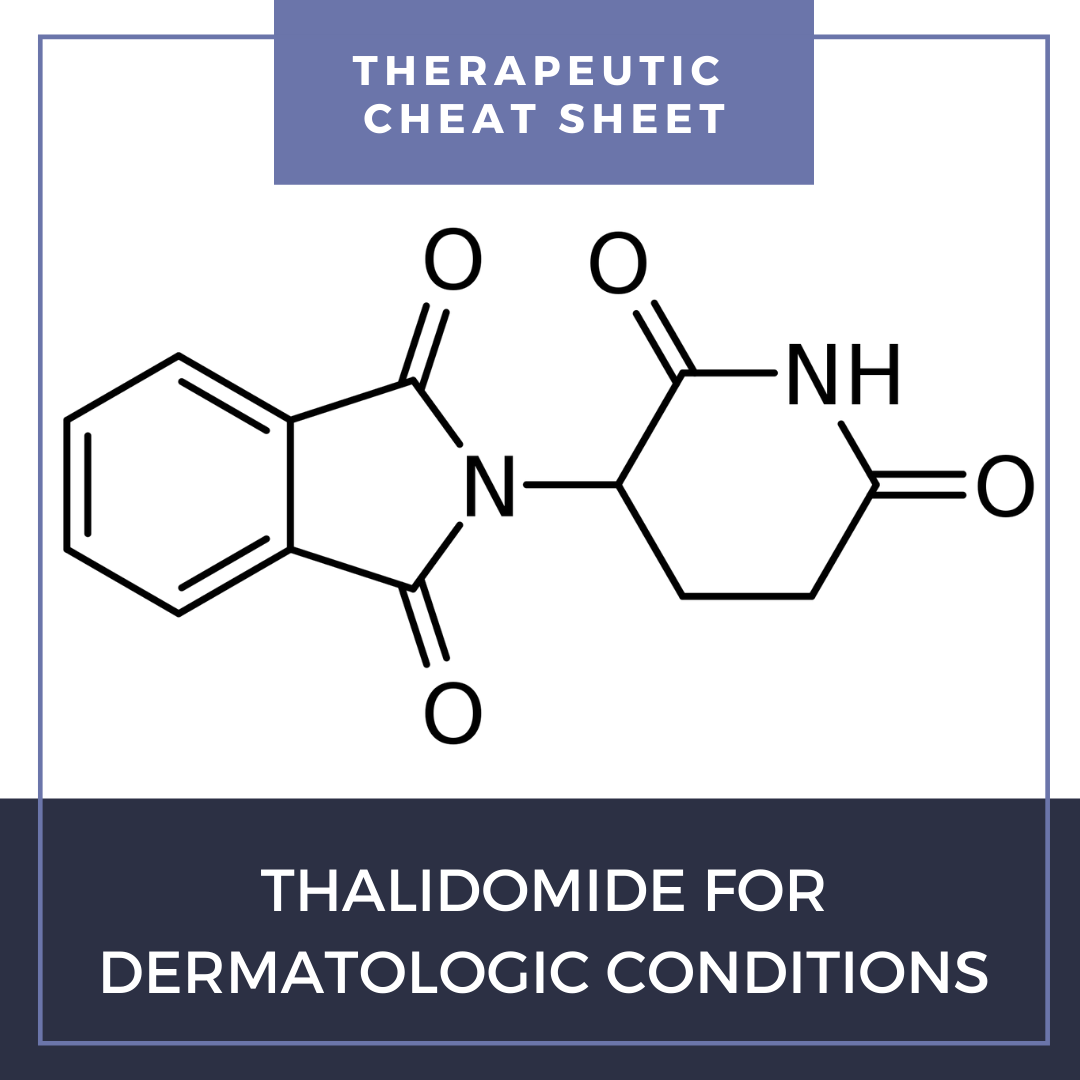Practical Tips for Managing the Itchy Patient
176841768417684 Next Steps in Derm, in partnership with ODAC Dermatology, Aesthetic & Surgical Conference, interviewed Dr. Shawn Kwatra, associate professor of dermatology at Johns Hopkins University School of Medicine. Watch and learn Dr. Kwatra’s tips for a workup in an itchy patient. Itch falls on the neuroimmune spectrum, so learn why it’s important to determine if a dermatological condition is to bl …
Next Steps in Derm, in partnership with ODAC Dermatology, Aesthetic & Surgical Conference, interviewed Dr. Shawn Kwatra, associate professor of dermatology at Johns Hopkins University School of Medicine. Watch and learn Dr. Kwatra’s tips for a workup in an itchy patient. Itch falls on the neuroimmune spectrum, so learn why it’s important to determine if a dermatological condition is to bl …
 Next Steps in Derm, in partnership with ODAC Dermatology, Aesthetic & Surgical Conference, interviewed Dr. Shawn Kwatra, associate professor of dermatology at Johns Hopkins University School of Medicine. Watch and learn Dr. Kwatra’s tips for a workup in an itchy patient. Itch falls on the neuroimmune spectrum, so learn why it’s important to determine if a dermatological condition is to bl …
Next Steps in Derm, in partnership with ODAC Dermatology, Aesthetic & Surgical Conference, interviewed Dr. Shawn Kwatra, associate professor of dermatology at Johns Hopkins University School of Medicine. Watch and learn Dr. Kwatra’s tips for a workup in an itchy patient. Itch falls on the neuroimmune spectrum, so learn why it’s important to determine if a dermatological condition is to bl … Continue reading "Practical Tips for Managing the Itchy Patient"


 Next Steps in Derm, in partnership with ODAC Dermatology, Aesthetic & Surgical Conference, interviewed Dr. Shawn Kwatra, associate professor of dermatology at Johns Hopkins University School of Medicine. Dr. Kwatra shares what dermatology clinicians need to know about racial disparities in itch. Find out how disease prevalence and presentation play a role in these disparities. Watch as Dr. Kw …
Next Steps in Derm, in partnership with ODAC Dermatology, Aesthetic & Surgical Conference, interviewed Dr. Shawn Kwatra, associate professor of dermatology at Johns Hopkins University School of Medicine. Dr. Kwatra shares what dermatology clinicians need to know about racial disparities in itch. Find out how disease prevalence and presentation play a role in these disparities. Watch as Dr. Kw …  Atopic dermatitis is a heterogeneous, chronic inflammatory disease that affects upwards of 10% of children and 7% of adults in the United States. Despite being an incredibly common skin concern among patients, AD continues to pose diagnostic and treatment challenges to dermatologists.
What are some common misconceptions about AD?
AD always starts in childhood. FALSE. 25% of adults w …
Atopic dermatitis is a heterogeneous, chronic inflammatory disease that affects upwards of 10% of children and 7% of adults in the United States. Despite being an incredibly common skin concern among patients, AD continues to pose diagnostic and treatment challenges to dermatologists.
What are some common misconceptions about AD?
AD always starts in childhood. FALSE. 25% of adults w …  Thalidomide was introduced in the 1950s as a “safe” sleeping medication; however, it quickly became vilified and was removed from the market for its severe teratogenic effects, most commonly phecomelia, or loss of arms and legs. Despite these devastating birth defects, thalidomide has a variety of indications for dermatologic conditions, with manageable side effects when used appropriately. We …
Thalidomide was introduced in the 1950s as a “safe” sleeping medication; however, it quickly became vilified and was removed from the market for its severe teratogenic effects, most commonly phecomelia, or loss of arms and legs. Despite these devastating birth defects, thalidomide has a variety of indications for dermatologic conditions, with manageable side effects when used appropriately. We …  Chronic pruritus affects 8-16% of the general population and has a profound impact on patient quality of life.1-3Although the symptom of pruritus may originate from a number of underlying etiologies, including metabolic derangements and infectious causes, along with neoplastic, inflammatory, or psychiatric conditions, other cases may be idiopathic in nature.4 Given the diversity of underlying cont …
Chronic pruritus affects 8-16% of the general population and has a profound impact on patient quality of life.1-3Although the symptom of pruritus may originate from a number of underlying etiologies, including metabolic derangements and infectious causes, along with neoplastic, inflammatory, or psychiatric conditions, other cases may be idiopathic in nature.4 Given the diversity of underlying cont …